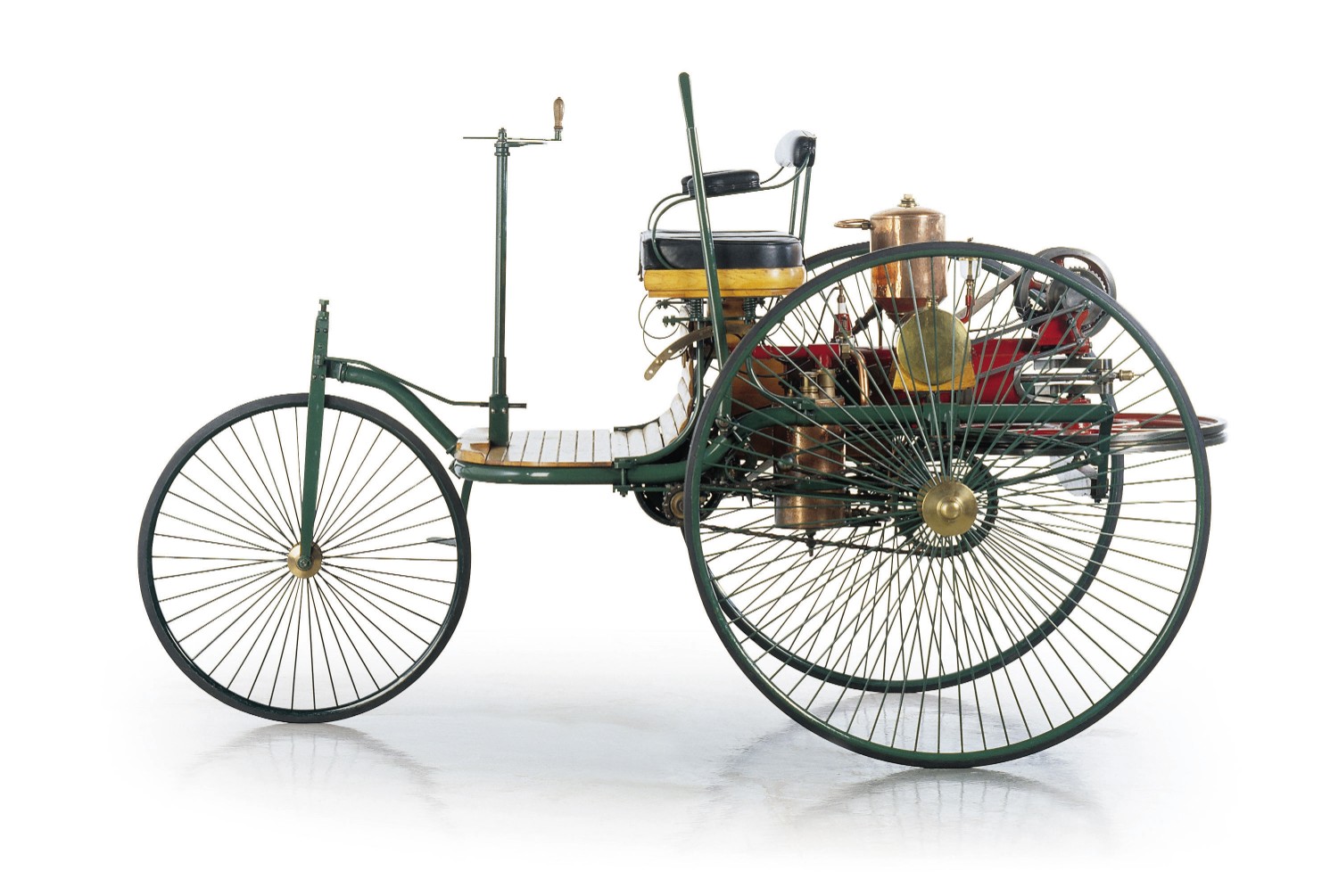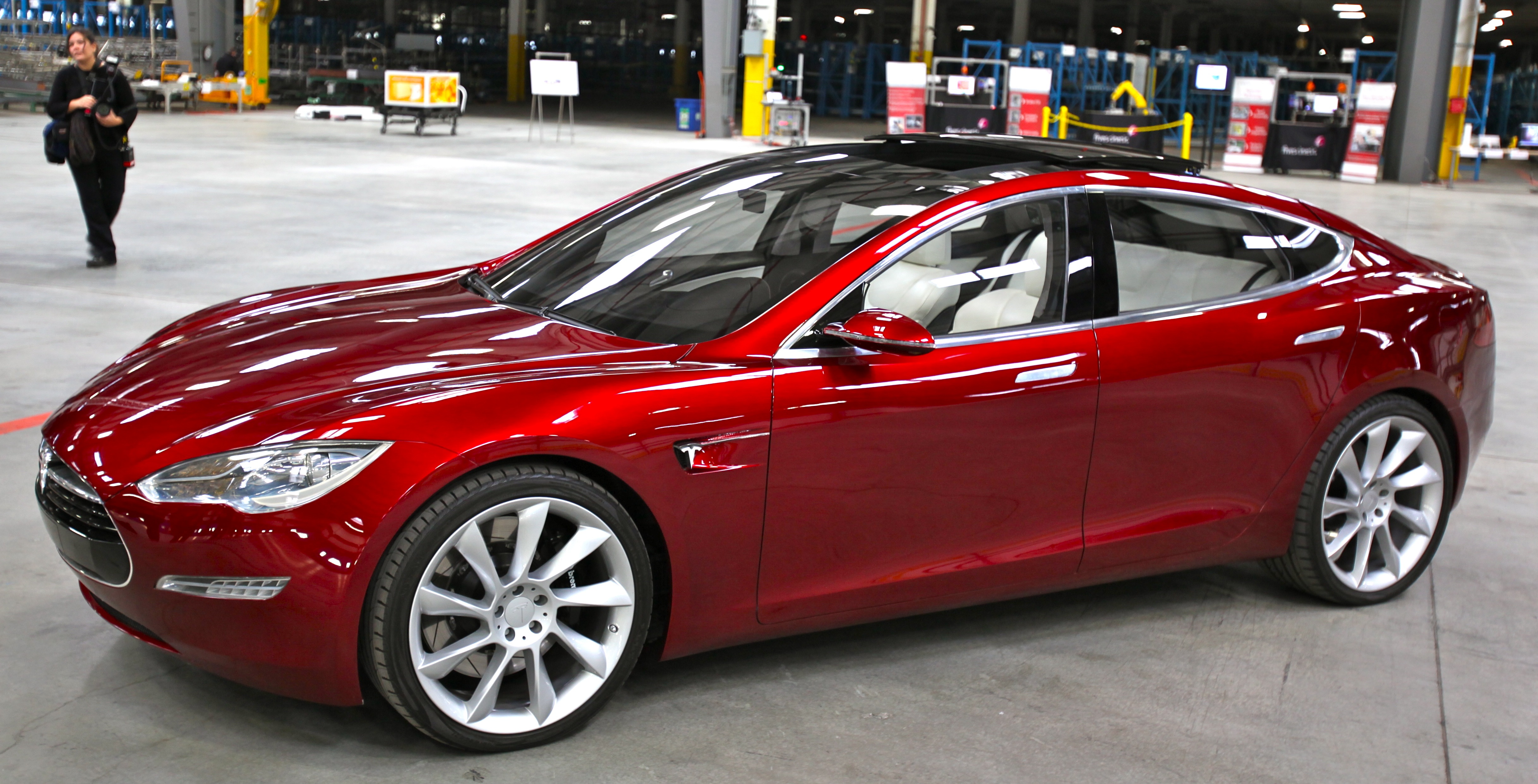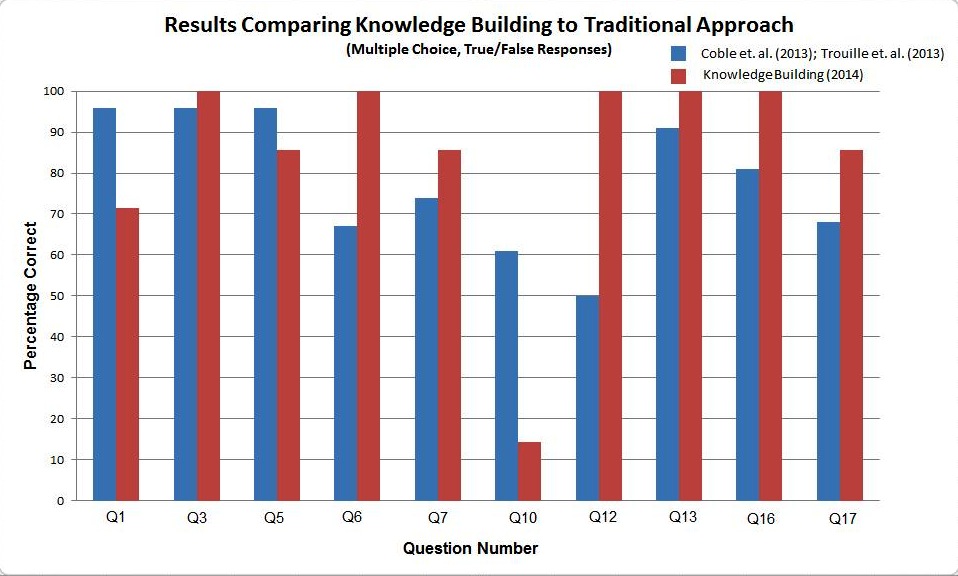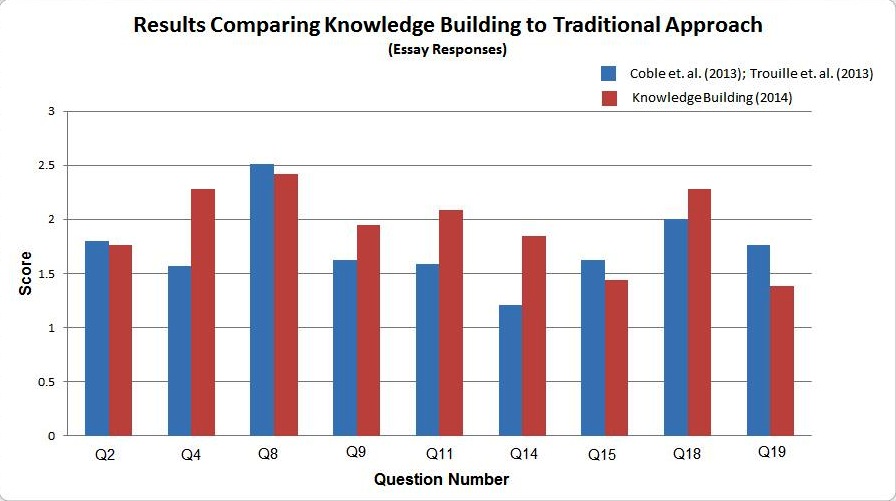Glen Wagner, Teacher-in-Residence Perimeter Institute
“How are black holes created and do they die? What proof is there for the Big Bang? Will the Big Bang ever stop? Is ‘absolute nothing’ possible?” These are just a few of the many questions my students have asked and attempted to answer during their unit on modern physics. As teachers, I think we all like the idea that our students should be curious, to ask questions about things that interest them, things they really wonder about. Yet, most of our teaching practices rarely embed curiosity-driven questions formed by our students as a part of a strategic process toward learning.
But perhaps we are unsure of how to start curiosity-driven learning environment and how to manage it in the classroom. What follows is a brief introduction on how this can be done using a learning environment called Knowledge Building. The goal of this article is to give a brief overview on what Knowledge Building is, how it operates, and the learning outcomes that can occur as a result of using it. Further details we be discussed at our May 2016 OAPT conference held at Wilfred Laurier University in the workshop entitled:
Classrooms Driven by Questions: A 21st Century Approach to Learning.
What is Knowledge Building?
Knowledge Building, at its simplest, invites students to work collaboratively within like-minded communities built around authentic problems about their world. It begins by acknowledging what they (and even you as the teacher) don’t know about something. Students are then asked to design their own questions that will be used to learn more and more about the problem under investigation. However, instead of working individually to try and answer their own questions, students form collaborative communities surrounding their questions. Then, using authoritative sources of information (e.g. guest speakers, field trips, laboratory activities, primary websites etc.), students deepen their own knowledge and then share it with the entire community so that everyone learns together.
What sets Knowledge Building apart from other inquiry-based learning environments is the insistence that students treat all knowledge as
improvable. Knowledge generated by the students is posted to an online, public space so that it can be read, questioned, debated, added to, and ultimately improved upon by other members of the community. The result is that the students assume a
collective responsibility to deepen the knowledge of their entire community and not just for themselves. In short, the success of Knowledge Building requires that personal knowledge now becomes
community knowledge.
There is nothing new or groundbreaking in this approach to learning. Beyond the classroom, knowledge generating organizations such as the Perimeter Institute, Apple, and Tesla work continuously within a collaborative environment to improve upon previous ideas and create new and improved models or products. Figure 1, for example, illustrates the idea improvement that has occurred with automobile technology over the past century. By asking questions, formulating ideas, and collaborating with others we improve the design or model of a product many times over. We see idea improvement in cell phones, airplanes, bicycles, the food we eat, the clothes we wear, and scientific models such as gravitation. Idea improvement is everywhere! What is unusual is how little opportunity we give our students to work with questions and ideas and to experience the process of idea improvement that is so prevalent in our society.

 Figure 1: An example of idea improvement upon the automobile over the past century: the first motorized car and the Tesla electric car. What improvements do you notice? (Carl Benz' Patent-Motorwagen Nummer 1 drawing ©2005 DaimlerChrysler AG, used under CC BY-SA 3.0 license. Tesla photo ©2010 Steve Jurvetson, used under CC BY 2.0 license.)
Figure 1: An example of idea improvement upon the automobile over the past century: the first motorized car and the Tesla electric car. What improvements do you notice? (Carl Benz' Patent-Motorwagen Nummer 1 drawing ©2005 DaimlerChrysler AG, used under CC BY-SA 3.0 license. Tesla photo ©2010 Steve Jurvetson, used under CC BY 2.0 license.)
 
Knowledge Building in Modern Physics
Figure 2 shows a collaborative effort by a group of seven students surrounding the evolution of the universe, specifically the Big Bang. This group of students, who held a strong, personal interest in the topic, formed a self-selecting knowledge building community to ask curiosity-driven questions, research, and develop understanding on the science of the Big Bang, Dark Matter and Dark Energy. To supplement their knowledge generation, students conducted hands-on investigations such as those provided by the Perimeter Institute Outreach program (e.g. dark matter and the expanding universe activities) to help deepen understanding of topics under discussion within their communities.
 Figure 2: A small sample of a community building knowledge about the Big Bang.
Figure 2: A small sample of a community building knowledge about the Big Bang.

This group of students is using a piece of software called Knowledge Forum, one that I like the best since it helps students display and manage knowledge easily within their community. Other collaborative software can be used as the teacher sees fit. However, Knowledge Forum is designed with Knowledge Building in mind. As the students research, they build upon the previous knowledge posted as indicated by the arrows linking together notes between students. The more notes that are link together, the deeper the knowledge gains. One such note is shown in figure 3 below. Notice the student uses primary sources to lay out the argument for an expanding universe. She then leaves behind a question, challenging conventional wisdom that the universe started as a point in space.
 Figure 3: A sample note posted by a student trying to understand the expanding universe.
Figure 3: A sample note posted by a student trying to understand the expanding universe.

Learning Outcomes
How well do students learn when
they take control of the questioning, goal setting, planning and assessment that is normally under control of the teacher? Figure 4 shows a comparison between two groups; the knowledge building group described previously, and that of several first year introductory cosmology classes from a state university in the United States. The university course was expert-controlled and expert-led in that the students were guided by an expert who selected topics, designed lectures, activities and laboratory work on behalf of the students. The Knowledge Building group was student-controlled in that the students designed questions, set goals, and self-assessed their groups’ work toward achieving their goals. When appropriate, activities and investigations were carried out by the students in both groups.
At the end of the unit and course, identical questions were answered by each group (post-test only). These questions were a combination of multiple-choice, true/false, and short essay around knowledge about the Big Bang, expansion of the universe, dark matter and dark energy. The questions were taken from textbook bank questions and questions developed through a collaborative effort by the experts at the state university.

 Figure 4: Test results comparing outcomes of a Knowledge Building group to a traditional, instructor-led course in cosmology. The top graph compares multiple choice and true/false. The bottom graph compares short essay responses.
Figure 4: Test results comparing outcomes of a Knowledge Building group to a traditional, instructor-led course in cosmology. The top graph compares multiple choice and true/false. The bottom graph compares short essay responses.

Examining the data statistically, there is no significant difference between the two groups. One conclusion we can draw from this data is that it is highly probable for students to learn just as well within a like-minded community of learners compared to a more traditional, expert-led approach to the subject matter. Does this mean we don’t need teachers anymore?
The Role of the Teacher
Of course not! The role of the teacher in a Knowledge Building community is
very important. But your role now changes from ‘sage on the stage’ to the ‘guide at the side’, so to speak. What this means is that you do not need to be a knowledge expert in modern physics; in our 21
st century world much of the expert knowledge the students need can be harvested online. However, having a basic understanding of the cutting edge ideas in modern physics will help you in following the online and face-to-face conversations of your students.
As the students post notes and formulate questions, you read as much as you can in order to facilitate their growth as a community. You facilitate this by providing students with activities and laboratories to conduct. You help them formulate relevant ‘open’ questions that lead to deeper learning compare to fact-based ‘closed’ questions. You provide just-in-time teaching when needed in order to help a community unpack a complex idea they are working on. Providing enrichment opportunities such as a guest speaker or field trip will show the students the real-world value of the work they do. Finally, you provide students face-to-face time away from the computer where they discuss their gains in understanding and decide where they wish go next. In short, you become a co-learner with the students. You let
them take control in those areas that used to be yours: planning, goal setting, organizing, and assessing. You provide the physical, emotional and managerial support they need to learn beyond what you could have ever hoped to do by yourself at the front of the classroom.
Conclusion
The world beyond the classroom is demanding the type of skills that are developed within a curiosity-driven environment such as Knowledge Building. These skills — collaboration, communication, creativity and curiosity — are the foundations for the process of science. The world beyond the classroom has used these skills for centuries to help improve our way of life, both technologically and socially. It would seem that if these skills are so important to the world beyond the classroom, then perhaps we should give our students the opportunity to practice them in our classrooms before they leave us.
Tags: Pedagogy







